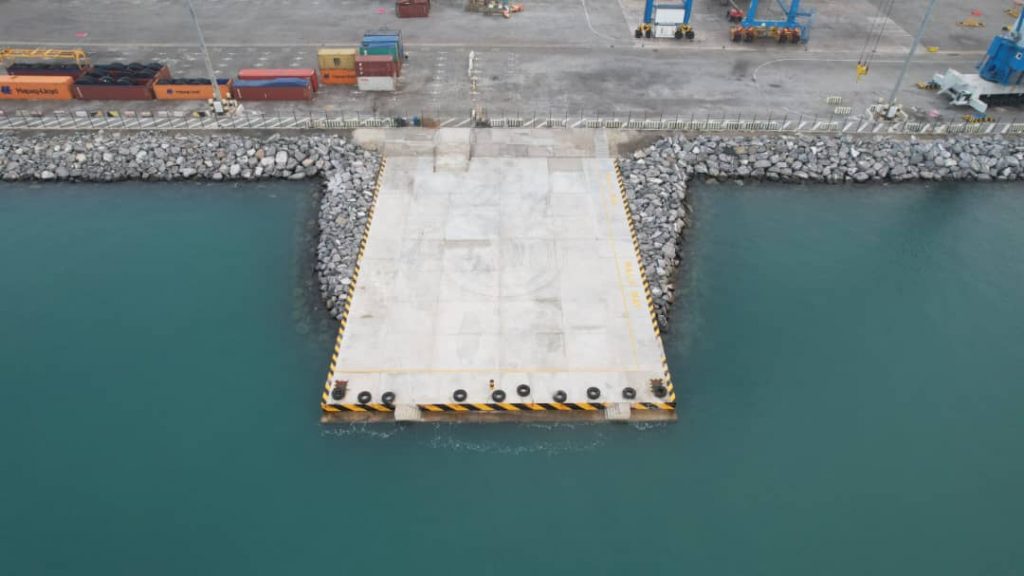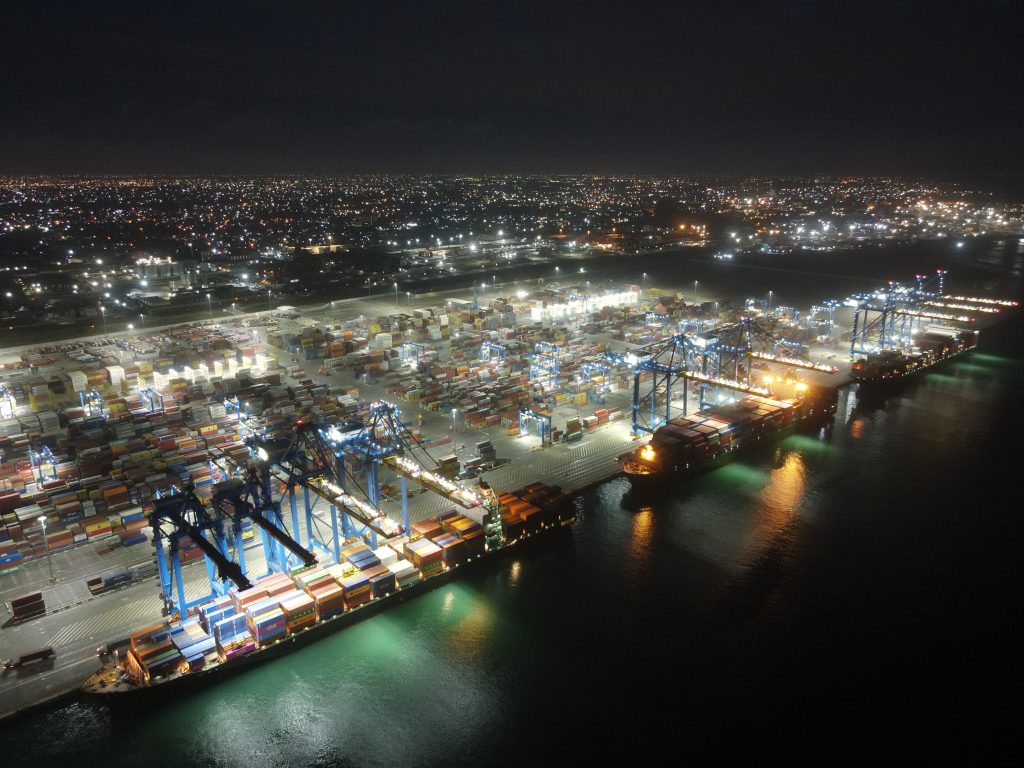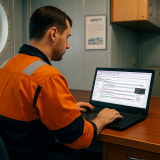In recent years, Malaysia and Indonesia have been faced with repeated incursions by Chinese Coast Guard (CCG) vessels into disputed areas of the South China Sea. In the case of Malaysia, these are waters off the coast of Sabah and Sarawak, and in the case of Indonesia, the waters north of the Natuna Islands. These two regions intersect with Beijing’s “nine-dash line,” which Beijing has since 2009 claimed as an exclusive maritime jurisdiction, including an assertion of ownership over the water column and continental shelf.
The increasing intensity of CCG encroachments has been motivated by the discovery of economically viable oil fields in Kasawari (in 2011), located in Central Luconia off the coast of Sarawak, and Tuna Block (in 2014), located in the northern part of the Natunas. Beijing has demanded that both Malaysia and Indonesia cease their oil exploration and exploitation on the contested continental shelves.
The Royal Malaysian Navy (RMN) and the Indonesian Navy (TNI-AL) have chosen to respond to Chinese incursions by “shadowing” CCG vessels that enter their waters, rather than confronting them and forcing them to leave. This practice should be understood in the light of how Kuala Lumpur and Jakarta calculate risk regarding Beijing’s assertiveness. Both nations regard Chinese assertiveness as something reactionary, as opposed to anticipatory, and believe that for their economically beneficial relationships with China to deepen, Beijing should be afforded the room to express hostility within respectively agreeable redlines.
The shadowing rule is similar to a waltz: When CCG vessels step forward, the RMN and TNI-AL step backward, and vice-versa. The rule of engagement is simple: As the Indonesian director of strategy at the Ministry of Defense recently put it, “jangan bikin gaduh,” or “do not escalate first.” With everyone practicing restraint, the do-not-escalate principle assures CCG vessels that they will not be confronted by the RMN and TNI-AL. Therefore, the Chinese are able to stay in disputed areas.
In mid to late 2021, the three countries waltzed around the oil rigs in this manner for four months. The dance began when the Sapura 2000, a pipelay barge owned and operated by Malaysia’s Sapura Energy, arrived at the Kasawari gas field on June 4. The RMN anticipated the arrival of CCG ships and then shadowed them until the completion of the exploitation in November. The RMN was not there to deter the CCG; it was an assertion of presence and a safety measure in case the CCG decided to interfere physically with the operation.
Simultaneously, Beijing also deployed the Da Yang Hao, a survey ship, in West Capella off the coast of Sabah as Malaysia conducted drilling in the Siakap North Petai oil field from September to October 2021. The Da Yang Hao was escorted by two auxiliary research vessels, a militia vessel, the Qiong Sansha Yu 318, and the CCG 6307. Despite their military escorts, the RMN allowed these vessels to conduct their activities without any strong reaction beyond shadowing them.
In the Tuna Block, when a semi-submersible rig, the Noble Clyde Boudreaux, arrived to drill two appraisal wells on June 30, CCG vessels took turns shadowing the operation until its completion in November. The CCG 5202 operated in the Tuna Block from July 3 to August 8 before it was replaced by the 5305, which remained through early October and was replaced by the 6305, which began operating near the Noble Clyde Boudreaux in mid-October.
Reacting to the presence of the CCG in the Tuna Block, TNI-AL started shadowing these vessels, usually one at a time. Sometimes TNI-AL pursued CCG ships in close encounters, at ranges of less than 1 nautical mile, but it restrained from firing a warning shot against CCG vessels, as it did in June 2016. The CCG ships were therefore confident enough to stay.
The Tacit Consent Behind the Dance
Malaysia and Indonesia are not without options in how they deal with Chinese maritime incursions. These options range from undertaking legal challenges to harnessing external powers’ interest in balancing Beijing. Instead, Malaysia discouraged the United States and Australia from getting involved as the CCG and RMN engaged each other in the West Capella area in April 2020. If the main issue was the power asymmetry between Malaysia and China, Kuala Lumpur should have been elated with other external powers defending it from Chinese bullying. Therefore, the more restrained shadowing tactics should be seen as a signal from both parties of the need for Beijing to save face.
For Malaysia, the shadowing practice emerged shortly after the administration of Prime Minister Najib Razak took office in 2009. But the consistency of its application since indicates that it has been adopted as the least-worst means of dealing with China in the South China Sea. The calculation of weakness is a factor: Balancing against Beijing is futile given Malaysia’s limited deterrence capacity and unwillingness to invest heavily in border security.
But it is also driven by a big picture analysis. Although China’s “nine-dash line” has no international legal basis, there is no way it could be persuaded to change its position, and given that Malaysia values its economic cooperation with China, some form of accommodation is required. Guided by this belief, Malaysia has endured more intense incursions as China has deployed military escorts to follow its survey ships and coast guard vessels.
Malaysian policymakers’ fear of Chinese domination is mitigated as long as Malaysia can continue to secure its position legally and Beijing acts within bounds set by Kuala Lumpur; both of these are coupled with the continued Malaysian belief that Beijing views Malaysia as a premium partner. Flowing from these assumptions is a Malaysian belief that Beijing’s presence in the South China Sea must be tolerated. Malaysia’s redline is any physical interference with its exploitation activities.
Indonesia’s adoption of the shadowing policy can be traced to 2017 when its approach toward Chinese incursions into its Exclusive Economic Zone (EEZ) around the Natuna Islands become more cautious. This contrasted with the series of assertive patrols in 2016 that hunted down Chinese illegal fishing vessels and then publicly sank them. The calculation for a more restrained policy is transactional and reflects a broader shift in the way Jakarta elites look at China. Transactional elements include investments and trade, as well as close cooperation on COVID-19 vaccine supply. These pragmatic factors have driven President Joko “Jokowi” Widodo’s policymaking elite, especially Luhut Panjaitan, his coordinating minister of maritime and investment Affairs, to restrain both the Foreign Ministry and the Indonesian Navy and induce them to soften their tone. This includes abandoning TNI-AL’s traditional practice of ramming and firing warning shots against vessels unwilling to be escorted out from Indonesia’s recognized EEZ.
The elite in Jakarta also started viewing Beijing in a more favorable light, believing that Beijing is a responsible stakeholder that views Indonesia as a crucial partner. Many policymakers in Jakarta recognize Beijing’s decision not to deploy military escorts to shield its survey ship, the Haiyang Dizhi, between August and September 2021, from the Indonesian Navy as a measure of restraint. Jakarta also felt secure enough with its own legal position, given there was little chance that Beijing would gain international recognition for its own claims.
This combination of factors made Jakarta willing to offer room for Beijing to creep into the waters in the northern part of the Natuna Sea as long as the encroachment remained non-military in nature, and Beijing refrained from physically interfering with its oil exploration activities.
How should we make sense of the belief that Beijing reciprocates Kuala Lumpur’s and Jakarta’s policies of restraint? Does this stem from a victim mentality that often explains away abuse as part of the package deal of sustaining relationships? I asked this question to high-level elites in Indonesia and scholars in Malaysia, and all expressed comparable views.
Elites in Kuala Lumpur and Jakarta were not so naive as to think that Beijing would not increase its assertiveness in the future. But they preferred to explain Beijing’s assertiveness in situational terms instead of viewing this expansion as a Chinese disposition. Explaining Chinese assertiveness in situational terms means Jakarta and Kuala Lumpur believe that Beijing only escalates when provoked. It was quite interesting how the Philippines’ lawfare against China kept being invoked as a case of what not to do: In this view, provoking Beijing and inviting the West to weigh in on the disputes would risk escalation.
This belief is unique and is not widely shared because it stems from the calculation that China’s assertive actions are reactionary instead of part of a grand vision in the South China Sea. Analysts from Australia, for example, often view Beijing’s assertiveness as something premeditated: as a policy of “salami slicing” designed to bring the entire area within the “nine-dash line” under Chinese control.
What happens if Beijing crosses the redlines laid down by Malaysia and Indonesia? Both countries are confident that the legality of their claim is undisputable and that the international community has their back. Coupled with the stakes of the relationship, Kuala Lumpur and Jakarta understand that Beijing will not flippantly undermine two relationships in which it has invested so much over the past few decades. Indeed, Malaysia and Indonesia are two of China’s most reliable and influential partners in Asia.
One episode that indicated a violation of Malaysia’s redline was when 16 Chinese military aircraft flew over disputed waters off its eastern state of Sarawak in April 2021. The Malaysian Air Force protested the violation, and in turn, pressured then-Foreign Minister Hishammuddin Hussein to issue a diplomatic protest against Beijing, and summon the Chinese ambassador to Malaysia to explain this breach of Malaysian airspace and sovereignty. The tension was resolved amicably behind the scenes, but this indicates that Kuala Lumpur’s views toward Beijing remain wary and fragmented, and that encroachments on its airspace are perceived as a redline violation.
The bottom line is that as long as Kuala Lumpur and Jakarta believe that they are in a domain of gains when dealing with Beijing, they will continue to adopt a more restrained approach.
The dance is dynamic, and its rules are continuously negotiated. China will continue to push, and both Malaysia and Indonesia will continue to protest. This is something that both countries have seemingly accepted as the reality of living next door to a giant.
Source: https://thediplomat.com/2022/08/china-indonesia-and-malaysia-waltzing-around-oil-rigs/









